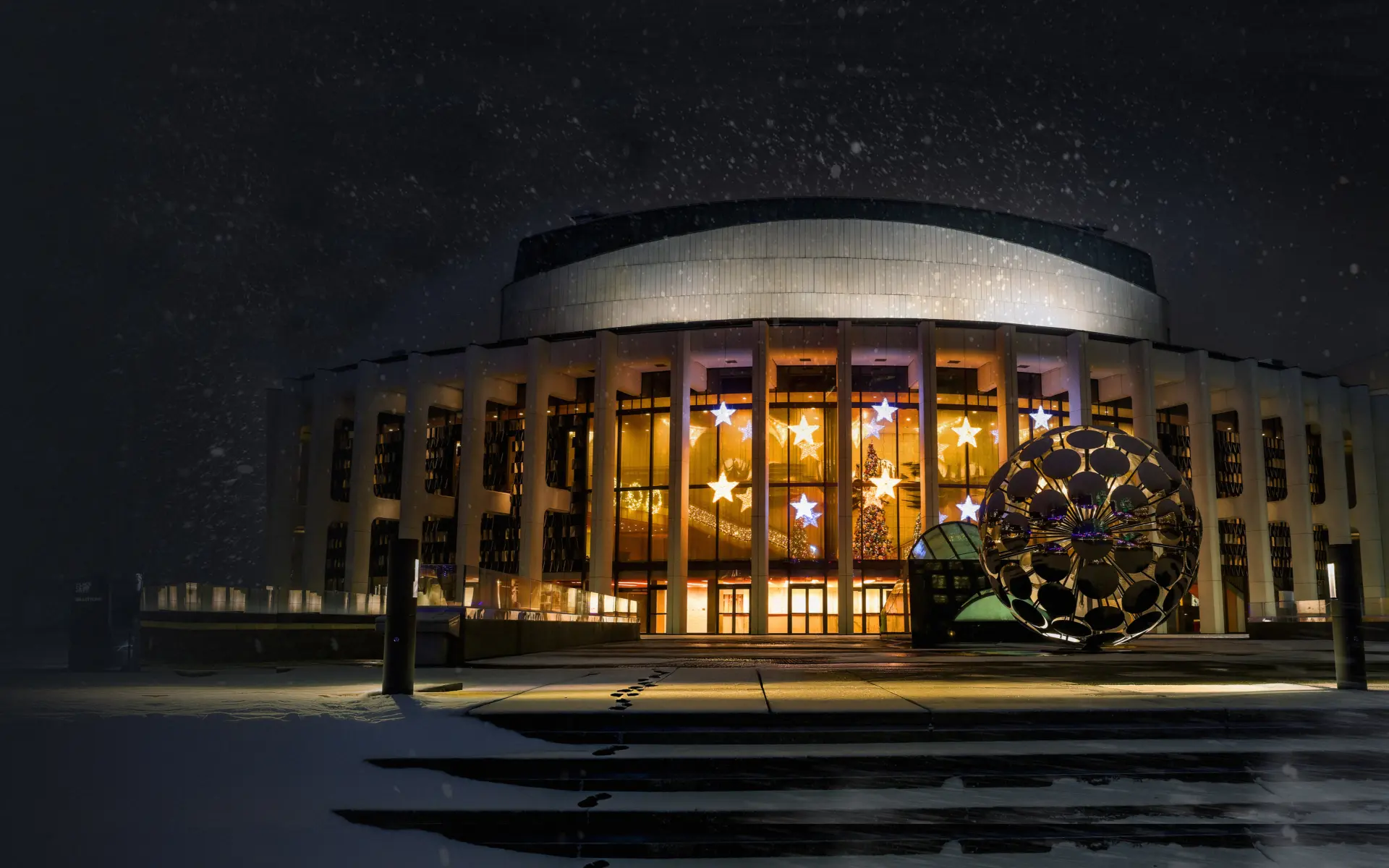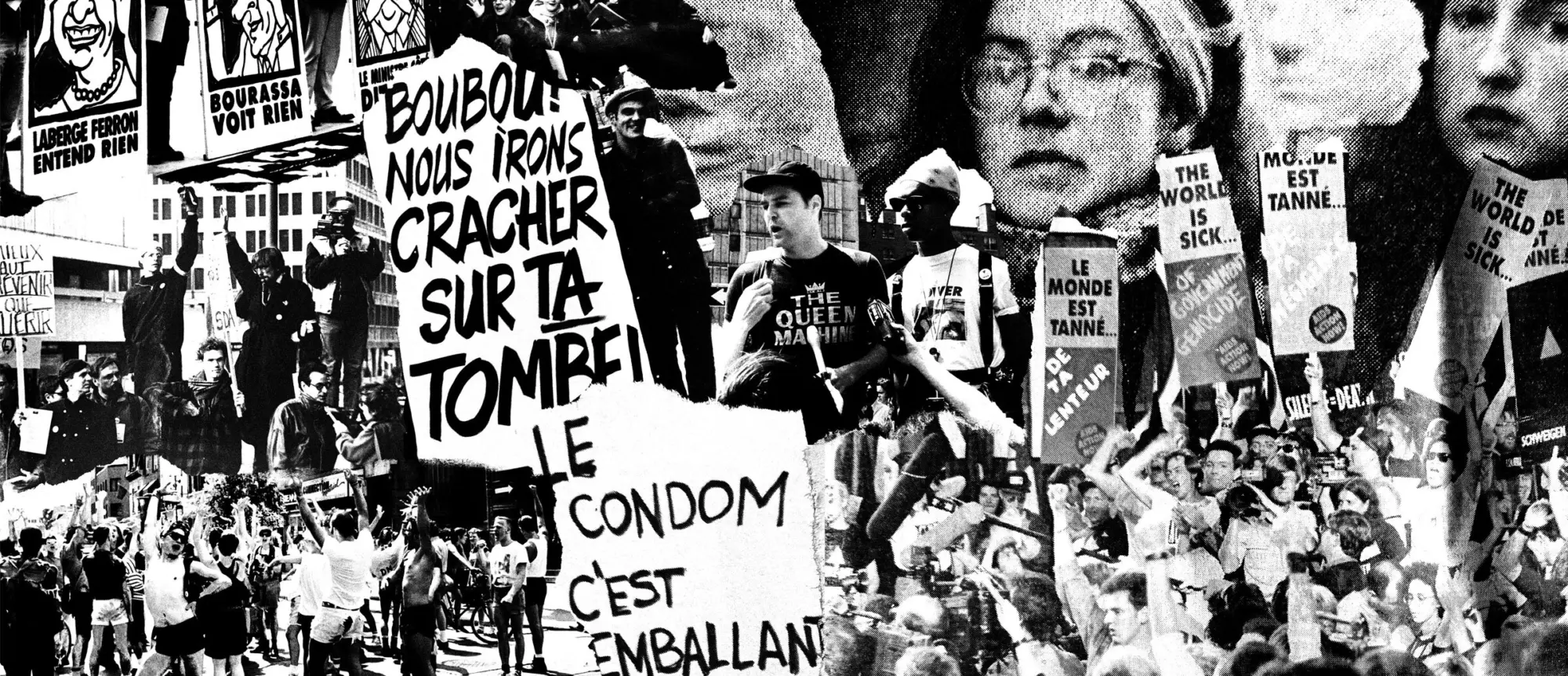Corps fantômes: from exhibition to performance
Ghosts have already begun to haunt the premises at Place des Arts. Soon, on stage at Duceppe, story of Montreal’s LGBTQ+ communities in the 1980s and 1990s will resonate in the show Corps fantômes. Together, the exhibition and show will take audiences on a twofold journey.
We begin in the Place des Arts exhibition room. Posters, plans, photographs, and objects bear witness to just how important architecture and urban planning were as part of the community response to the HIV/AIDS epidemic. In September, visitors had discovered how the Village and the bars, along with care spaces and places of resistance were shaped by and for a community in search of dignity. Later, starting October 22, a second component will be held in the lobby of Théâtre Jean-Duceppe, exploring the role of design and media in LGBTQ+ mobilization. These archives, assembled by a team led by Professor Olivier Vallerand (Université de Montréal), shed light on a part of history that is still too often relegated to the shadows.
Then, the lights go out. It’s 1990, in Montreal. Gay men are falling victim to police repression, AIDS, and hate crimes. But it’s also the year of a new resistance: die-ins, raids, mobilizations. This is where Corps fantômes—the play presented at Duceppe from October 22 to November 22—sets its story. We follow Francis, Rachel, and Mo, young adults caught up in the speed of the times, fear, and intoxication—while answering the call for solidarity. Thirty years later, Marion rediscovers her missing father’s writings and, through them, reopens the book on an interrupted story.
“The 1990s in Quebec were a time of incredibly intense LGBTQ advocacy. Yet, this period is rarely portrayed in our fiction, even though it’s full of stories that deserve to be brought to light,” explains Maxime Carbonneau, the play’s director.
La Messe Basse, the collective led by director and script editor Dany Boudreault, spent two years delving into archives and meeting with activists and survivors to develop this saga. The play brings forth memories of such key figures as Michael
Hendricks, Réjean Thomas, Claudine Metcalfe, and Josée Yvon. It also revisits pivotal events: the police raid on the Sex Garage, the die-ins, and murders that have gone unpunished. Documented history becomes theatre, delivered by an impressive cast that embodies the spirit of an era.
“What really interested me was that these people involved in community work were not destined to become the voices of the LGBTQ community in such a spectacular way, nor to make such a significant mark on history,” explains Maxime Carbonneau. “But the events and the awakening typical of that era is exactly what made their destiny.”
Two experiences, one memory
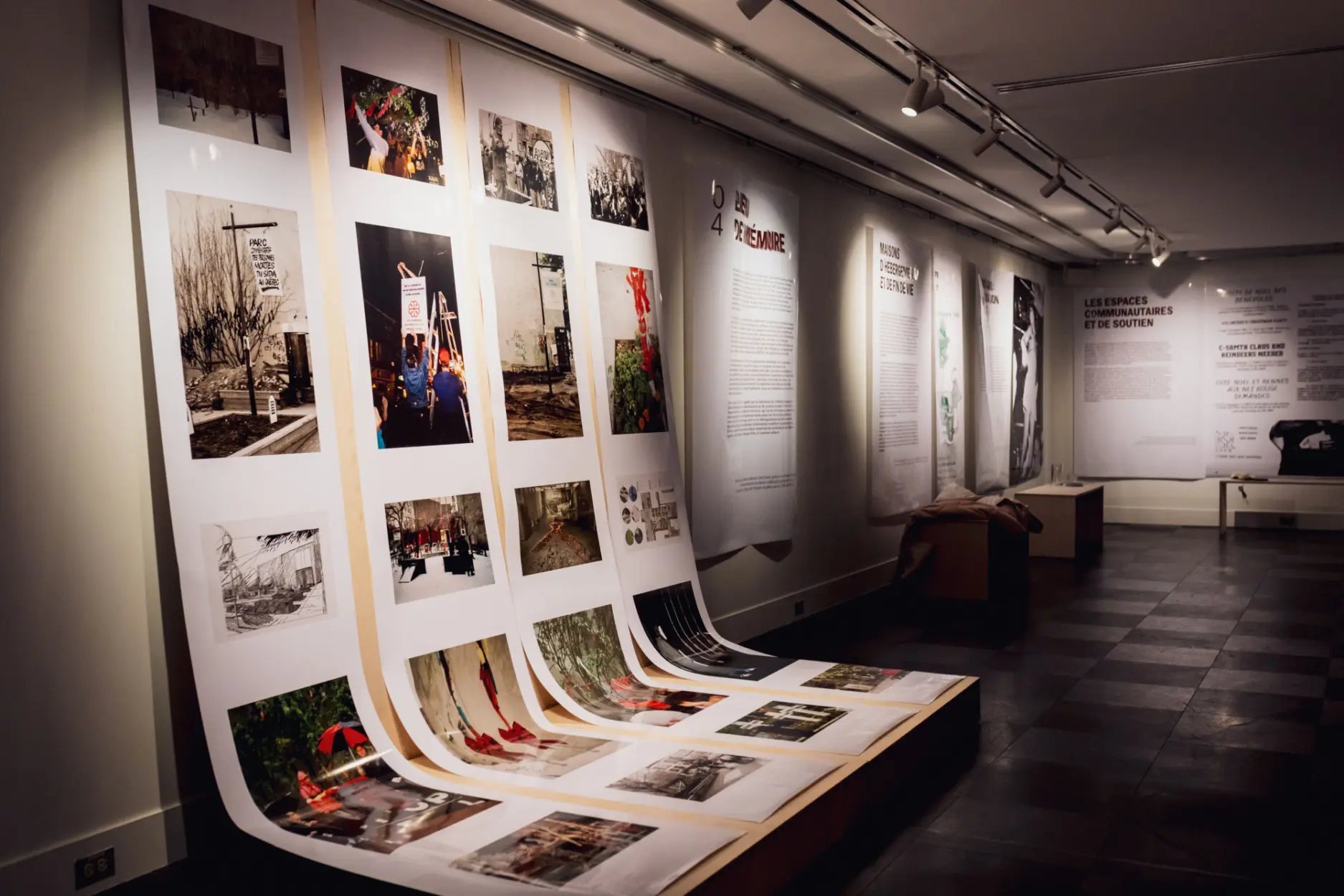
While the exhibition highlights the places, images, and objects that have shaped Montreal’s LGBTQ+ life, the play brings to life the voices and bodies of those that produced them and used them. One draws maps, the other reproduces emotions. Together, they invite the audience to appreciate how strongly these traces still burn today.
“The exhibition is a bit like the antechamber to the show. It opens a door to the heart of the research and reflection that fueled our creation,” explains Maxime Carbonneau. “Even though our approaches were separate at the start, our research and that of Olivier Vallerand and his students came together. Some of the archives and faces seen in the exhibition also cross over into the play. For the viewer, seeing both is like gaining access to the background of the creative process, both through images and through theatre.” For Maxime Carbonneau, those who experience both the exhibition and the show will have a privileged view into this era and its struggles: “It’s a more comprehensive perspective, which allows us to understand the places, the archives, and the voices that shaped this memory.”
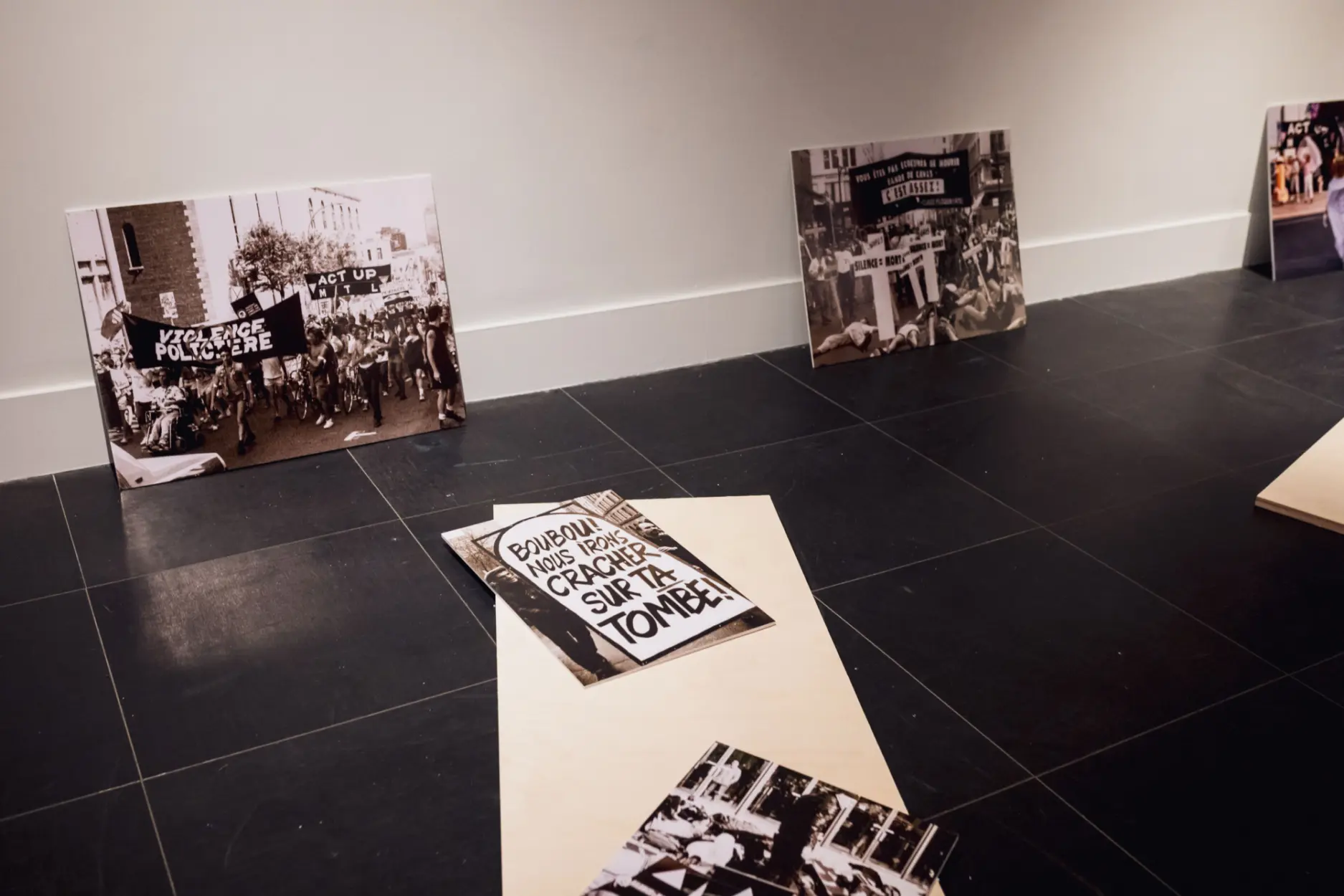
In the halls of Place des Arts, as on the stage at Duceppe, absent bodies thus regain their presence. The spectator is invited to walk between two spaces, two artistic forms, but with the same duty of remembrance: that of bringing ghosts back to life.
Would you like to learn more about this topic?
Here is a series of articles published on Duceppe's blog as part of the project (in French only):
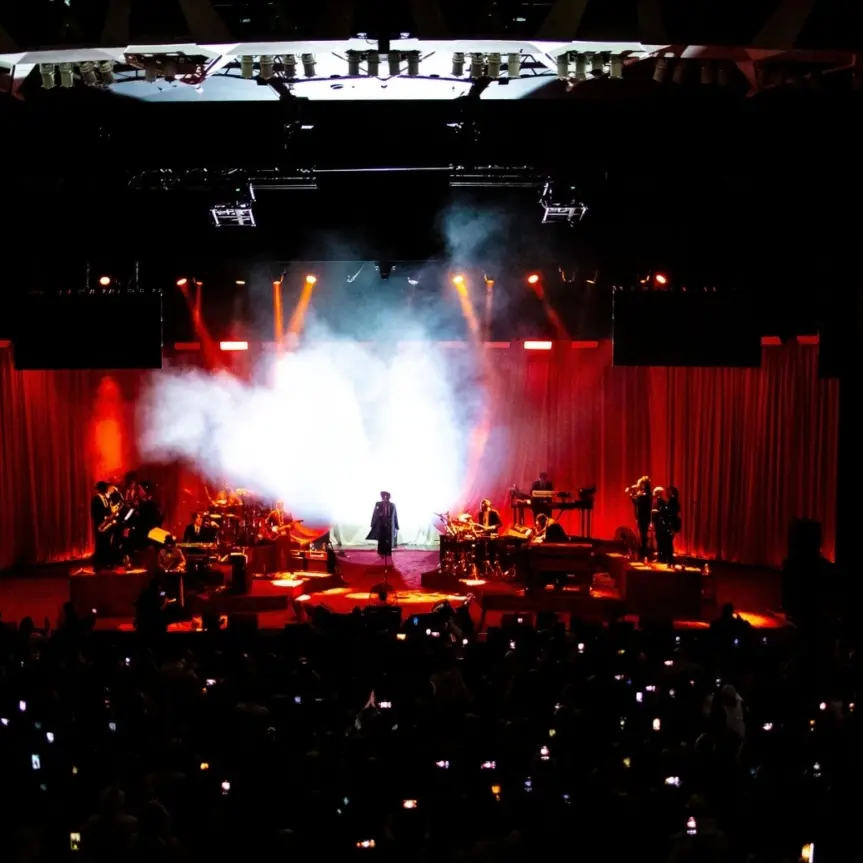
2025 in Review: Between Nostalgia and Creation
As 2025 comes to a close, let’s look back at the shows that defined the past year at Place des Arts, capturing the hearts of our audiences and staff.
Article
FTA – Festival TransAmériques: 4 suggestions to shake up your festival routine
As it does every year, the FTA is once again kicking off Montreal’s festival season. The Festival’s 19th edition promises to offer even more original offerings that stray off the beaten path. Here are ideas that are sure to please fearless festivalgoers!
Article Recommendations Festival
Janette Bertrand: 100 years of Struggle for a More Open Quebec
An iconic figure on the Quebec cultural and media landscape, Janette Bertrand will celebrate her 100th birthday on March 25. Place des Arts is hosting a program of activities highlighting several of the key events and aspects of her life.
Article Portraits Event
Ludmilla Chiriaeff: Tribute to an Unforgettable Montreal Danse Pioneer
Few figures have left such an enduring legacy on Montreal’s dance sphere as Ludmilla Chiriaeff, the celebrated dancer and choreographer who founded Les Grands Ballets Canadiens.
Article Archives Tribute

